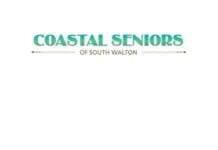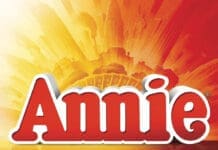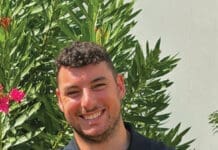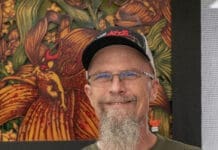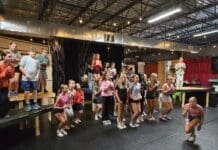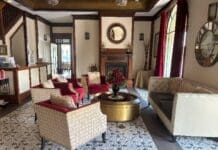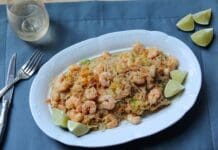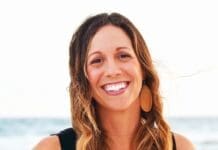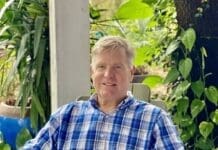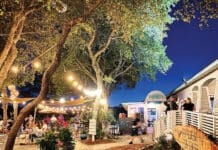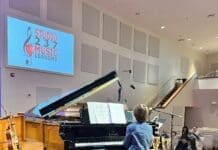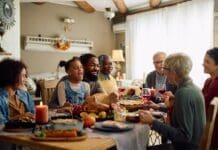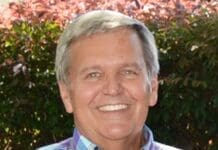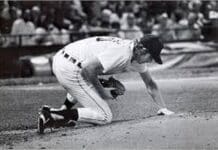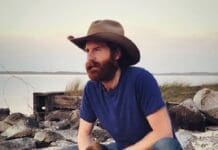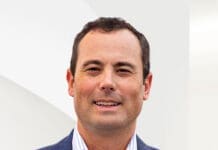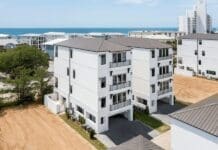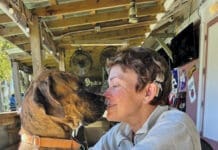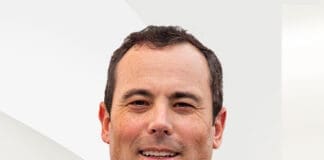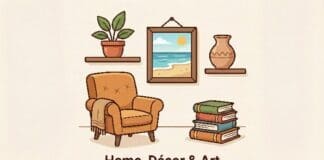This January, Seaside celebrated its 35th anniversary with Robert Davis and many of the first generation pioneers on-hand celebrating and reminiscing.
Robert Davis, Founder of Seaside

“For some South Walton residents, it may be difficult to remember the days when County Road 30A wasn’t packed with condos and summer homes. But there was a time, a few decades ago, when it was just sand and the occasional car,” said Robert Davis. Davis says he has more visions for Seaside and hopes to begin sharing them with the community soon.
Charles Modica
Charles Modica remembers the day in the mid 1980s when his dad was driving down 30A on their way to Panama City and his mother saw a road had been cut and it had a red house on it. She wanted to investigate.
“Robert was sitting on the porch with his dog Bud in his lap rocking,” recounted Charles. “Robert told my dad about his vision and we left. I remember my dad got as far as the end of the street and said, ‘That man is crazy!’ But in 1984, they closed on a lot.”
After Davis talked the Modicas into buying the lot, he set out to talk them into opening a grocery store in his town.
“What we envisioned was a nice little country store, but Robert said ‘No, let’s go to New York.’ We did and he took us to Dean & DeLuca. That was what he wanted for his little town,” said Sarah Modica, Charles’ mother.

Dave Rauschkolb
“When I met Robert and he told me about his vision, it wasn’t hard for me to make the decision to quit college and open Bud & Alley’s at age 24,” said Rauschkolb. “What (Robert has) done for the community and state is phenomenal,” he added.
“It has financial and lasting quality. It has touched so many lives. The planning design has lasting value that will go on for generations,” he said. “It’s amazing to be here and get to have a voice.”
Erica Pierce
Erica Pierce was a struggling young mother when she started waiting tables at Bud & Alley’s 30 years ago and met Daryl Davis. Daryl allowed her to open the Pizitz store in Seaside.
“The Davises gave me a Cinderella story that no one can imagine,” said Erica.
Excerpts from The Seaside Story

Town founder’s vision of a new urban community leads to the first of its kind… (By Lori Leath Smith and courtesy the Seaside archives)
In 1946, on one of the family’s summer pilgrimages to the shore, Robert Davis’ grandfather, J.S. Smolian, bought 80 acres near Seagrove Beach on Florida’s northwest coast. His intention was to build a summer camp for his employees, but his business partner wanted no part of what must have seemed like a worthless tract of sand. The Smolian family continued coming to that same shore every summer, and occasionally J.S. would take young Robert to the fields at the western edge of Seagrove Beach and walk around the tract.
Robert Davis grew up to be a student of history as well as business, and became an award-winning builder/developer in Miami in the 1970s. When he considered making plans for the property near Seagrove, he naturally thought about idyllic family vacations along the same coast as the small cottages the family had stayed in. If he closed his eyes and let his mind wander back, he could almost feel gentle sea breezes evaporating the moisture on his skin as he sat on a porch rocker after a shower at the end of a day on the beach, absorbed in stores being told by grandparents, parents, aunts, uncles, and cousins.
Seaside is Born
The idea of Seaside started with the notion of reviving Northwest Florida’s building tradition, which had produced wood-frame cottages so well adapted to the climate that they enhanced the sensual pleasure of life by the sea. Cottages accommodated generations of family members, and kids got to sleep on the porch. These cottages had deep roof overhangs, ample windows, and cross ventilation in all rooms. They were built of wood and other time-tested materials and with reasonable maintenance, could last several generations.
A Town Built for People
A sensibly laid-out town or city would, in fact, have all of the necessities and pleasures of daily existence within walking distance of one’s residence. You might have to use mechanical transportation to go to the opera, but you should not need to use a car to get a quart of milk nor should you have to be a chauffeur for your children.
The New Urbanism and the Seaside Code
Initial sales in 1982 were encouraging — better, in fact, than anticipated. Sales were also helped by early recognition, in both the architectural and popular press, that the Seaside idea was quite appealing and might be a model for changing the patterns of urban and suburban growth. Over time the idea became a movement. The New Urbanism or Smart Growth had indeed begun to change planning and development practices throughout the country. Robert Davis emerged as a leader of that movement serving as Chair of The Congress for the New Urbanism, an organization dedicated to slowing the spread of suburban sprawl and to reviving cities and neighborhoods.
Downtown Seaside started, however, in a very modest way, as a collection of tables under canvas where people gathered to buy and sell fruits and vegetables, handcrafts, and flea-market items. It was not unlike the daily or weekly markets, which formed the embryonic beginnings of most ancient Mediterranean towns.
Today downtown Seaside incorporates an array of delightful restaurants and interesting shops, including Northwest Florida’s most unique food market.
A Town for Generations
Since its beginning in December 1981, Seaside’s success has been remarkable. Now there are more than 480 homes, many of which are available for rent. The cottages range in size from small and cozy for a couple, to large and rambling, big enough for several generations to gather together.
Whether it is for a weekend, a week, or a lifetime, Seaside must be savored long enough to let time slow down, to allow cares to float away on a balmy breeze. This can only be done through extended porch-sitting, leisurely strolling and sharing time with those you care most about in a way that current urban existence rarely allows.
Seaside Style
Houses are close to the street and their porches are a comfortable conversational distance from the line of picket fences. (By the way, no picket fence designed may be duplicated on the same street.)

Another quality that adds to life in Seaside is the visual harmony among the houses. The houses are quite different from one another, but they all speak a common language since they use similar building forms and materials. In places such as Nantucket, this type of harmony was accomplished through a community consensus on the right way to build for that locale and climate. This kind of consensus existed in Northwest Florida until the 1950s.
Seaside’s Code outlines the essential rules of this region’s building tradition. Seaside houses are well adapted to the local climate and use indigenous materials in a simple, straightforward way. Seaside houses have porches, roof overhangs, and ample windows that make them comfortable in this climate and allow their occupants to enjoy balmy breezes.
“We wanted to create a place for people who want to share time and not just let time rush by.” ~Robert Davis, Founder of Seaside




